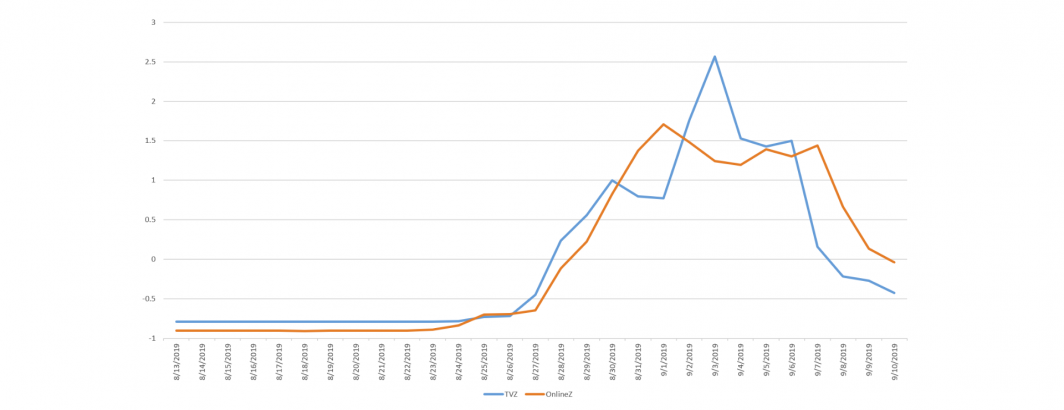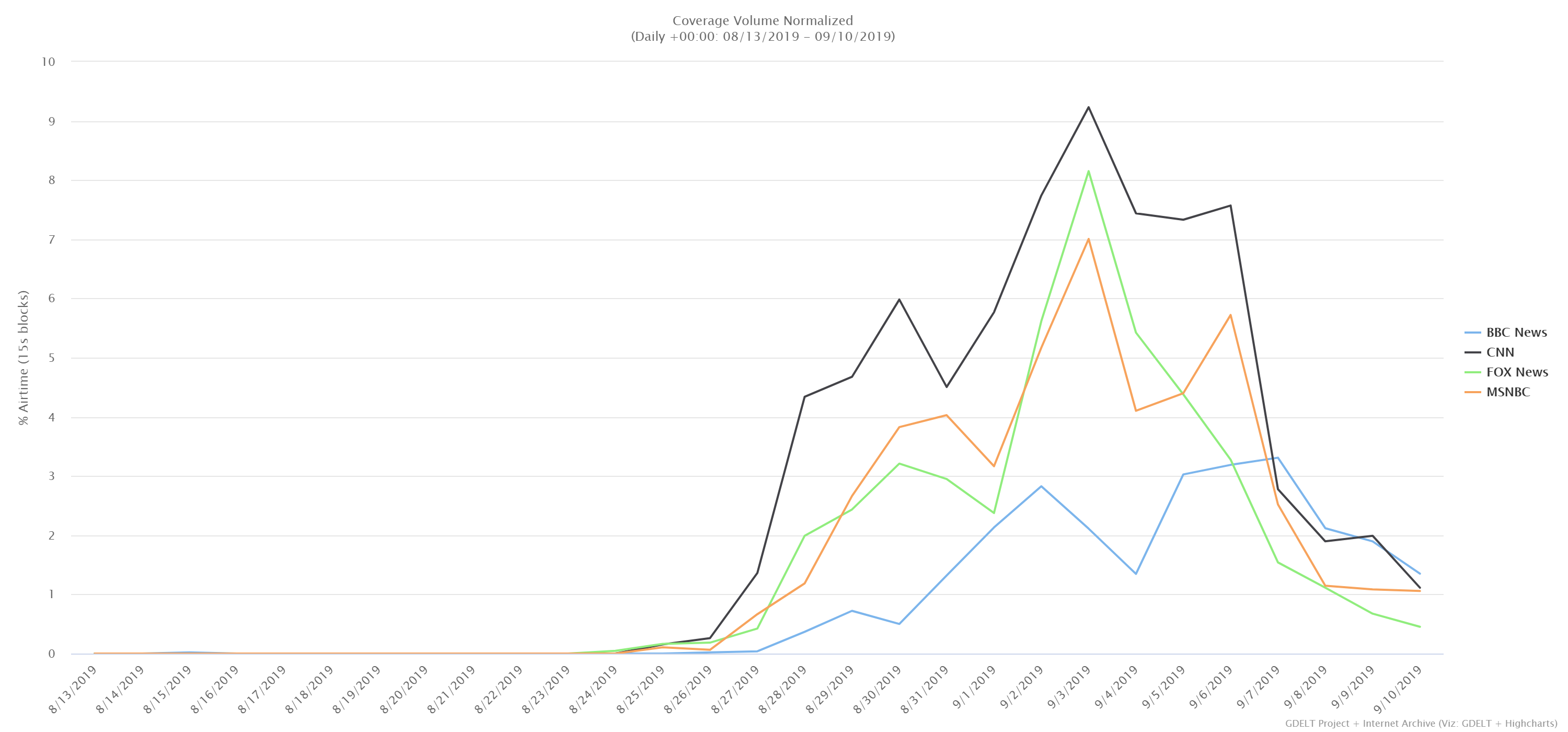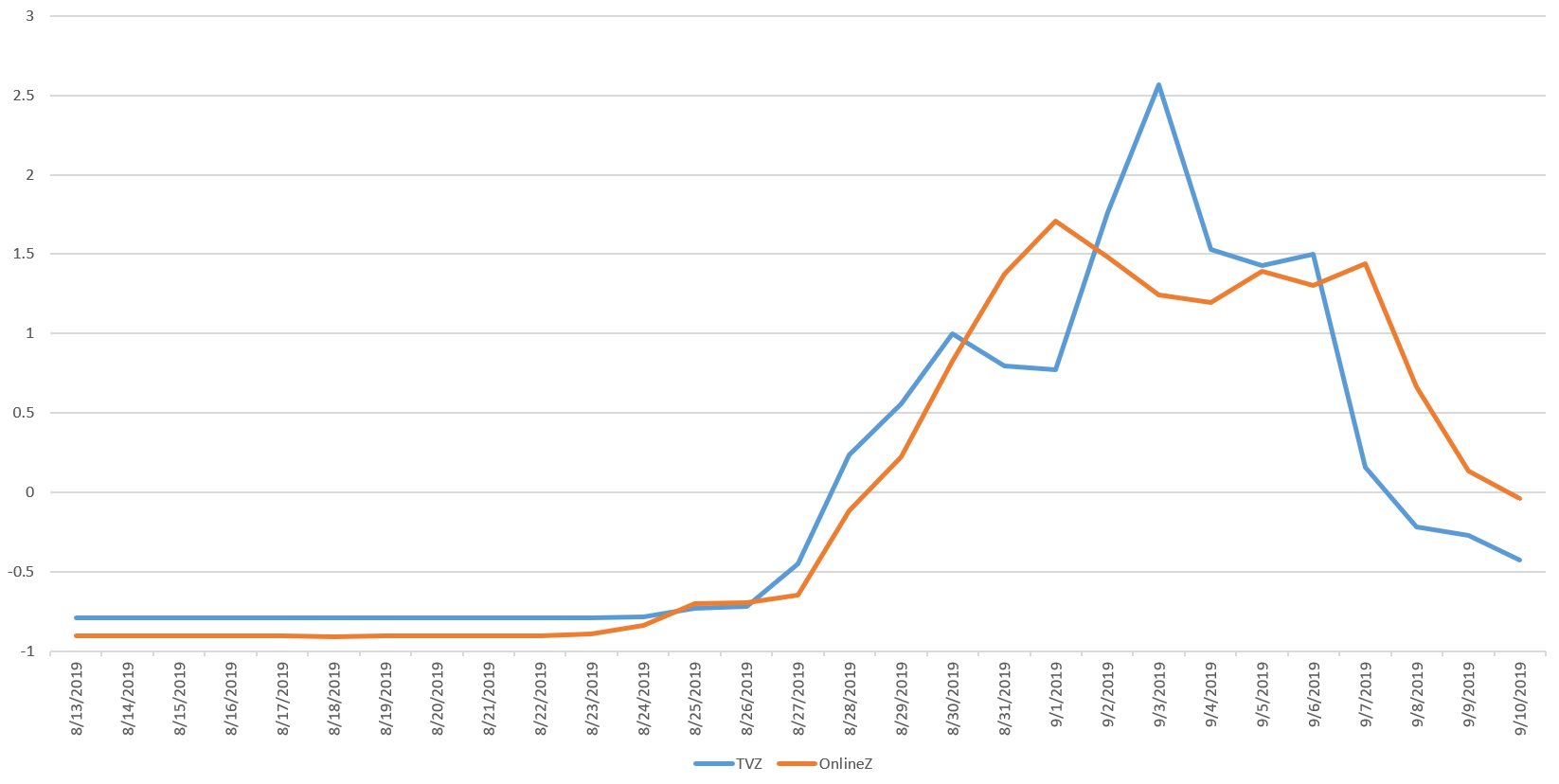
In 2015 we showed that most natural disasters follow a fixed mathematical trajectory through the news media. However, both of the disasters analyzed were in remote areas without strong economic links to the US and Europe. Hurricane Dorian offers a counter-example of a disaster that devastated the Bahamas and was originally projected to have a heavy impact on the United States.
The timeline below shows how the hurricane was covered through BBC News, CNN, Fox News and MSNBC. While the four stations largely track one another, despite the UK's strong connection to the Bahamas, BBC News covered the hurricane's devastation the least of the four, though as of September 7, 2019, as the stations ramped down their coverage, it was ramping down the slowest.
Live Version.
Live Online News Version.
Yet it is the following timeline that offers perhaps the most intriguing commentary on the difference between television and online coverage of major natural disasters, plotting the combined coverage of CNN, Fox News and MSNBC against worldwide online coverage, both plotted as Z-Scores (standard deviations from the mean) to allow them to share the same Y axis.
Online coverage was the first to begin discussing the hurricane, but as Dorian's evolving projected track made it a likely threat to the US, on August 27th television coverage took the lead.
Online coverage ramped up linearly through Dorian's Bahamas landfall on September 1st, decreased through the 3rd as the skies cleared sufficiently for rescue operations to begin in earnest and a fuller accounting of the damage to be made, continued relatively stable until September 7th and then has decreased day over day since.
In contrast, television peaked on August 30th then remained stable through September 1st despite the storm making landfall. Coverage ramped sharply up on the 2nd as initial damage reports became available and then peaked sharply on the 3rd as television crews were able to capture footage of the full extent of the devastation. By the following day on September 4th there was little more for TV crews to film and for the next two days on the 4th and 5th they continued steady coverage, but on the 7th coverage plummeted as the stations exhausted what they could say about the Bahamas and there was little impact in the US to cover, rapidly turning their attention elsewhere.
In short, television news is constrained in covering events they cannot directly access and must wait for conditions to improve in order to point the camera, while online news can chronicle events in realtime based on available information.

